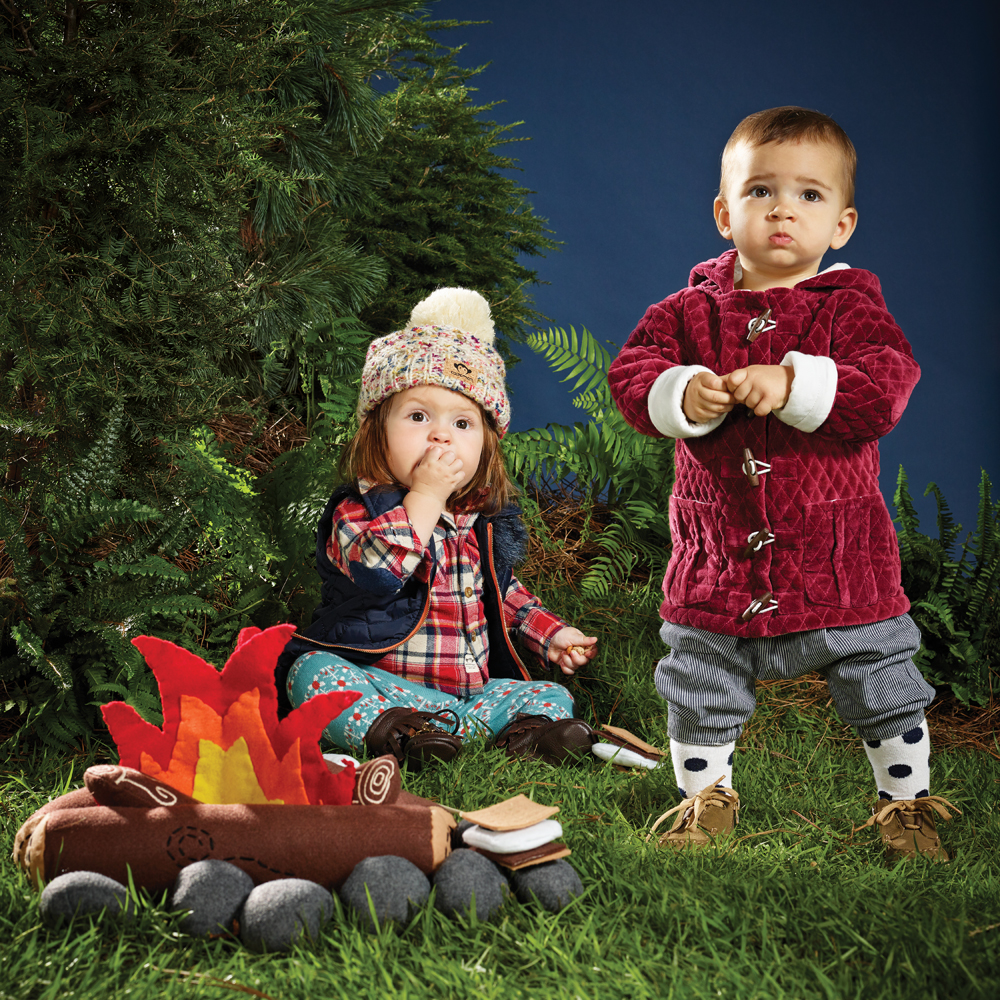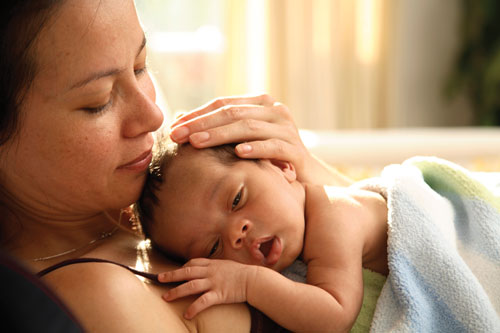Between us

No one was around to see it, but that didn’t […]
No one was around to see it, but that didn’t keep me from feeling a little self-conscious the first time my daughter and I curled up with a book together. She was just a newborn, far too young to understand the story I had picked, or even to make out the pictures.
I’ll admit, it felt a bit like talking to myself—until I remembered that for my baby, understanding the words was not as important as hearing my voice, and that looking at the pictures mattered less than looking at my face. Reading together, even in those early days, gave her the chance to do both.
We understand that the first months of life represent a key time for interacting with our babies in ways that help them grow and learn. But knowing exactly how to engage an infant—especially one whose schedule boils down to eat, poop, sleep, repeat—can be a challenge. Fortunately, you can keep it simple. Everyday routines are rife with opportunities to help your baby get to know you and her world.

If, like me, your baby shower yielded a starter library of children’s classics, don’t feel like you should keep those books shelved until your little one is old enough to appreciate a stirring plotline. Reading to your baby from the get-go sets the stage for the two of you to enjoy some cozy quiet time together.
“You’re not teaching your baby to read; you’re exposing him to the joys of reading, or being read to,” says Bob Morrow, EdD, an early learning specialist and professor emeritus at University of the Pacific in Stockton, California. “The interaction is the most important part of it.”
Morrow recommends sturdy board books for reading with infants, in part because they hold up to gumming, but also because it’s easy to turn their pages with just one hand—a must if you’re cradling a newborn with the other.When a baby is read to, the familiar sound of a mother’s voice—or the deep tones of a father’s—comfort her, deepening the bond between parent and child, Morrow explains. Reading aloud also exposes your baby to language; the more words she hears, the better prepared she will be to learn to speak and, eventually, to succeed at school.“A baby is constantly absorbing language,” Morrow says. “Point things out in the illustrations. Label them: ‘That’s a tree. Oh, look, there’s a bird.’”
Inside voices
Almost any daily routine can be an opportunity for your baby to listen and learn from your words and phrases, advises Matt Hertenstein, PhD, a researcher with the Touch and Emotion Lab at DePauw University in Greencastle, Indiana. When you’re traveling in the car, describe the passing scenery. When you’re changing a diaper, use a singsong voice to explain each step.
“It’s easy, when you’re diapering a baby, to go on autopilot,” Hertenstein says. “You’ve changed 100 diapers, and now you’re changing number 101. You’re not really thinking about it, you’re not talking to the baby, something else is on your mind. That’s OK. I think that’s inevitable sometimes. But babies learn a lot about language during those repeated routines that happen on a daily basis, so try to stay present when you can. Talk to your baby during these routines.”
Sweet sensations
Early on, your baby’s eyesight will still be rather hazy. While she’s working hard on developing her vision, try to engage her other senses, especially hearing and touch, Hertenstein suggests.
Sarah Garabedian, mom of one in South El Monte, California, was quick to introduce daughter Edith to the family dogs. She made the experience a tactile one, running the baby’s fingers and toes over the animals’ fur. “Of course I was always cautious,” Garabedian remembers. “She loved to touch the dogs, and when she heard them coming, she turned and smiled.”Bathtime, too, offers the chance to create multisensory experiences within everyday routines, says David L. Hill, MD, a pediatrician in Wilmington, North Carolina, and author of Dad to Dad: Parenting Like a Pro.
It can be a particularly special time for dads, who sometimes feel disconnected from other opportunities to bond, such as during feeding. While you’re washing your baby, give him a gentle massage. Splash water over his feet as you sing songs and say, “Splish-splash, splish-splash.”
For a newborn, any sensory experience can be a springboard for learning. Just be careful not to overdo it, Hill advises. “Newborns are easily overstimulated. If you take a newborn into a noisy or chaotic environment, the baby will sort of shut down, go to sleep. If you see that happening, you probably want to get out of that environment.” Your baby isn’t in danger, Hill explains, but it’s likely the overstimulation will leave her cranky.
Give and take
Especially after your baby’s first smiles appear—when she’s around 6 weeks old—it’s easy to make every interaction an attempt to coax out one more of those delicious gummy grins. Seeing your baby respond to you is a wonderful thing—but she also needs to see you respond to her, notes Hertenstein.
Let your baby see you react to the little sounds and noises she makes. “If she’s waving her arms a bit, say ‘Oh, you’re happy too!’” Hertenstein suggests. “Then imitate the behavior back to the baby.” You’re reinforcing your baby’s budding awareness that her actions, needs and feelings don’t go unnoticed—the people in her world respond to them. You’re also giving her an introduction to the back-and-forth nature of social interaction: You do or say something, then I do or say something back. Early in life, babies don’t know how that works. “You can teach them by responding appropriately to their signals and giving them a chance to respond to you,” Hertenstein explains.
Your baby will get better and better at back-and-forth interaction, and when she does, prepare for some of the most magical moments of infant parenting, Hill says: “She shakes her head at you. You shake your head back at her. She laughs and shakes her head back at you again. It’s one of the earliest forms of interactive play that an infant can engage in. I always find that moment incredibly exciting, when the two of you realize, ‘We’re playing together!’”







